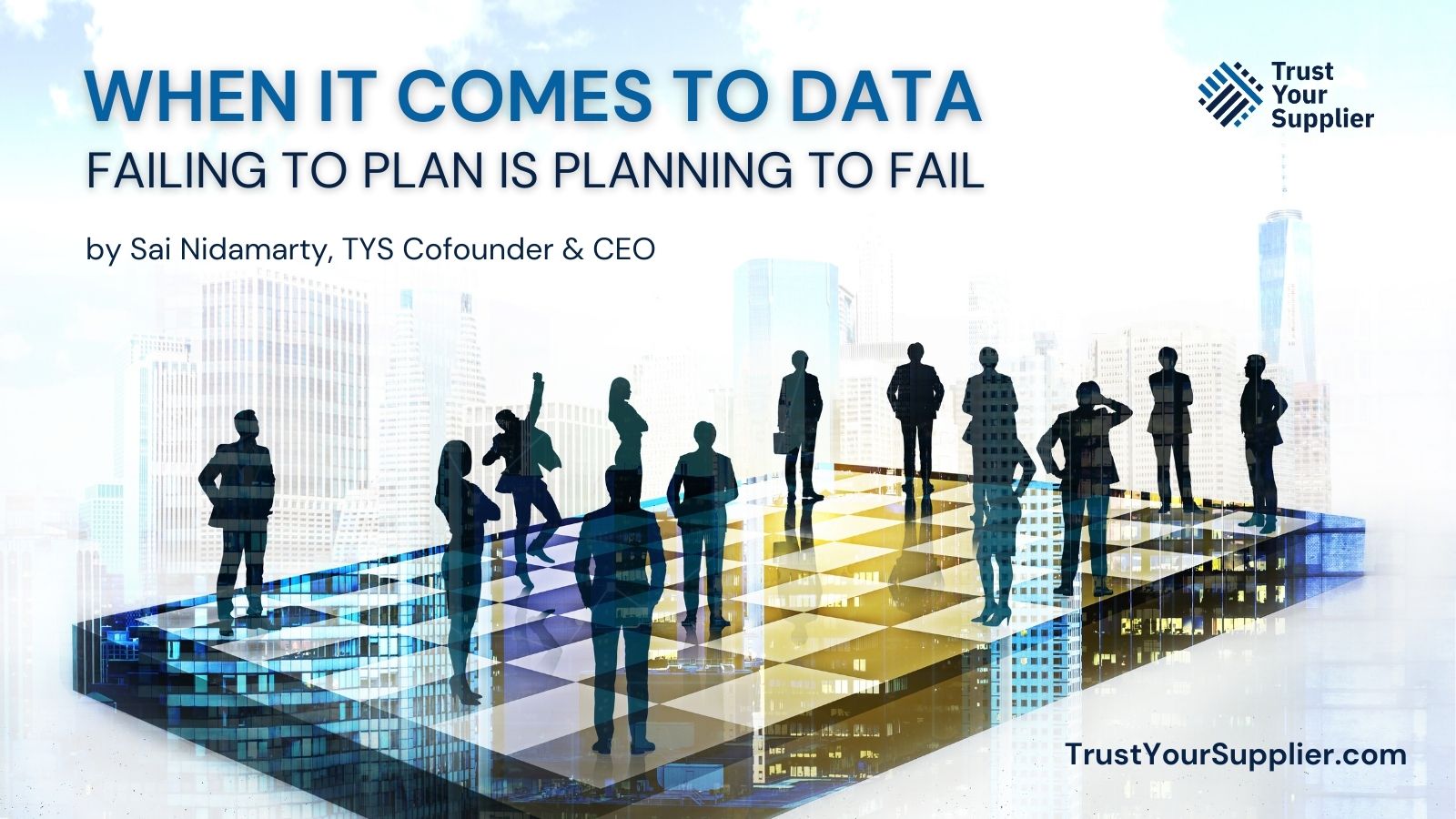by Sai Nidamarty, TYS Cofounder & CEO
Data knowing is a significant and intimidating problem that almost all organizations face, yet they need the data culture and cycles to do something about it. Beyond focusing solely on the consequences of bad or missing supplier data, we have convened a panel of industry experts and thought leaders to closely examine the data challenge from the following three critical points: 1. Data consequence 2. Data culture 3. Centralized planning & supplier oversight data framework. – Supplier Data: What You Don’t Know Can (And Will) Hurt You
The above link is to a webinar on which I was a panel member with Tom Redman and Greg Tennyson. From its title, you can see that we were talking about the importance of data.
Of course, data being important is not a new revelation. Nor is it a subject that hasn’t received significant attention in the media. However, despite its ubiquitous presence, many organizations still need help turning their vast amount of raw data into actionable knowledge. The question is, why? Of even greater importance than the why is how do we fix it – how do we convert our data currency into tangible returns?
During this panel, we answer this latter question.
Data “Street Cred”
Tom Redman and Greg Tennyson are recognized industry thought leaders. Tom, who graduated from Florida State University in 1980 with a PhD, Statistics and worked with AT&T Bell until 1995, when he started his company “The Data Doc,” has written extensively, including a compelling article on data for the Harvard Business Review.
Greg has a procurement pedigree going back to the late 1990s with companies like Oracle, SalesForce, and Coupa. As for me, my experience dates as far back as the early 1990s in the positions of software engineering and program management with IBM.
In short, individually and collectively, we have a deep understanding of not only technology but data as well.
Based on the above, you must know that the panel discussion would be uniquely insightful because we weren’t tackling the data question from a conceptual or theoretical basis. What this means is that during the 60 minutes, we didn’t just talk about the challenges with data but what you can do “about” getting the most from your data using my 3-Point Supplier Data Plan.
The 3-Point Supplier Data Plan
“Partner, Mitigate, Comply is at the heart of the 3-Point centralized planning & supplier oversight data framework. Going forward, I will call it the 3-Point Supplier Data Plan.” – Sai Nidamarty
So, what is the 3-Point Supplier Data Plan?
During the panel, Tom, Greg, and I discussed at length the specifics of the 3-Point plan, including how you can introduce it to your organization. By the way, you can use this 3-Point link to access the on-demand recording of the session.
In the meantime, at a high level, here is a quick overview or outline of the supplier data plan:
Point #1 – Partner
- Enterprise data drawn from many data sources are generally inconsistent, incomplete, and unreliable for decision-making. Partnering & investing with automated tools to onboard, manage and monitor a single source of truth for the entire supplier base
- Enhance authenticity and provenance, creating a data culture with a single source of truth
- Collaborating with suppliers for the exchange of information
- Establish relationships with comprehensive 3rd party data providers in monitoring supplier risk in real-time; take appropriate actions to mitigate
Point #2 – Mitigate
- Data and transactions MUST be transparent with an immutable audit trail
- Simple, quick discovery of qualified, trusted suppliers
- Nearly touchless supplier onboarding – A faster turnaround of query resolution and proactive alerts enabling better & timely strategy realignment
- Monitoring risk is now at least equal to monitoring spend & margins for procurement organizations
- Governance of data management throughout the supply chain
- Integrate with a range of immutable ledger technologies
Point # 3 – Comply
- Maintain control of authenticity throughout the supply chain – enhancing supply chain visibility and risk.
- Comply with regulative reporting and compliance regulations (SCDDA, Diversity/human rights laws, insurance)
- Meeting internal objectives on compliance (e.g. ESG)
- The continued evolution of a globally compliant supplier base
- Blockchain uses digital signatures, data encryption, and cryptographic function to protect the integrity of the data.
Once again, I invite you to use the above links to access the on-demand version of the webinar.
I would also suggest that you stay connected with us, as we are planning to do a special live – open mic Q&A session, where we will specifically discuss the 3-Point Supplier Data Plan in much greater detail. Follow us on LinkedIn or Twitter for updates.


0 Comments